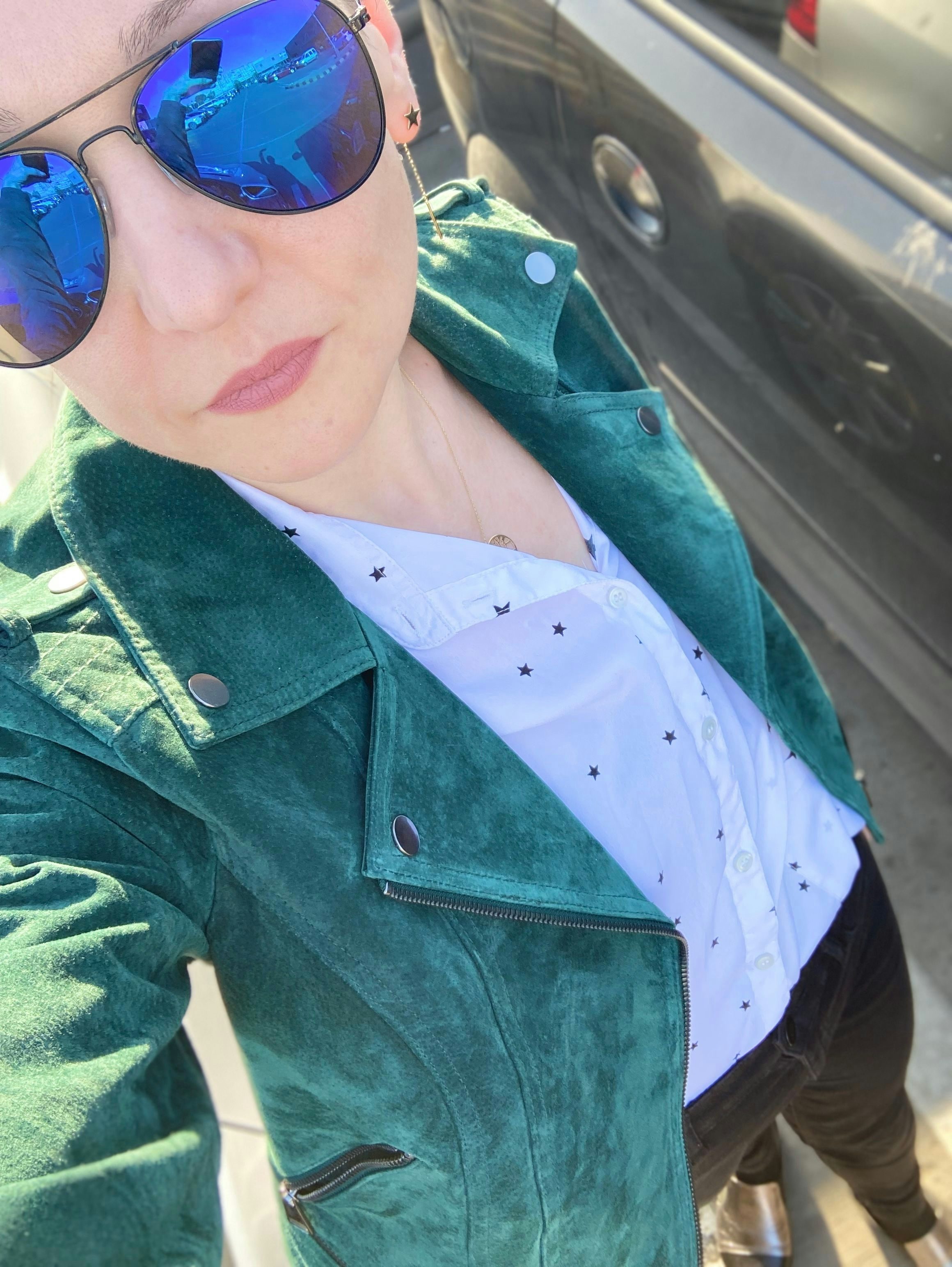In this article, I'll take a closer look at the different types of needs that can be met by sending various messages and how we can use those insights to improve our daily communication.
Today's topic is a must-read for anyone interested in the impact of emotions on interpersonal relationships and learning how to improve their social skills. Especially if you're curious about the most valuable findings delivered by the biggest names in human interaction psychology.
Table of contents:
- Basic human needs with Maslov's Hierarchy of Needs
- Five human needs in any relationship (by Gary Chapman)
- Principles and guidelines in relational communication – Jacques Salome
- Conclusion: relational hygiene rules
Basic human needs with Maslov's Hierarchy of Needs
When we want to start a conversation about someone's behavior – or lack thereof – we should think of it as being triggered and driven by a specific motivation. Maslov's hierarchy of needs perfectly captures the ambiguity of why we do things (or: what motivates us to act in a certain way).
According to this widely accepted theory, each person has a distinct set of needs that, no matter where they are in life, can be organized hierarchically. As you're probably already familiar with the pyramid's concept, it's worth noting that we usually complete it from the bottom up as we aim for more complex goals after satisfying our basic needs. The rule can sometimes be overrun when, i.e., a person can achieve self-actualization while still in poverty – like Van Gogh and a solid portion of artists in general.
As a result, until we are fully committed to reaching our full potential, we will prioritize basic survival needs first, followed by psychological needs.
You might wonder why this is important in communication. Before we comment on another person's actions, we should always take a step back and consider what prompted the other person to act in a certain way. So, perhaps, your potential hire was less interested in career advancement because they were struggling financially due to layoffs related to the recession. And it's possible that your coworker isn't lacking ambition; instead, they worked long hours without having their physiological needs met (they are thirsty or tired).
Again, we’re completing our pyramids from the bottom up.
A second illustration depicts a more detailed approach to the pyramid, showing the last update made by Maslov. The refreshed concept reordered the hierarchy of the levels by including cognitive (desire for knowledge, curiosity), aesthetic (desire for beauty), and transcendental needs (a desire for finding a more profound meaning) in the model.
What's interesting is that fulfilling the higher levels of the pyramid is only possible by ourselves, as opposed to the bottom levels, in which fulfillment can be 'assisted' by other people. Another important observation is that our 'personal pyramids' vary daily. So, as in our previous example, after satisfying a need from a chosen level, we can still be degraded to it after some time. This is because we constantly change places and relationships; something can also affect our general (either physical, mental, or both) state.
According to Maslov, the only constant in your life is you, so the more needs you can satisfy, the more self-respect you'll achieve. However, in general, each person's goal is to climb their own pyramid. But how do you put this knowledge to use in order to communicate effectively?
That's something that psychology can help us with, too.
Five human needs in any type of relationship (by Gary Chapman)
As you are probably aware, everyone prefers to be appreciated in their unique way.
Some people like to spend most of their time with their peers, focusing on the physicality of the group. Others prefer to remain effective while actively avoiding any form of gratitude or 'payback' as they simply enjoy the state of task completion itself. There are also people that are highly motivated by the promise (and execution!) of an impending reward for their efforts, whether material or simply verbal, such as public congratulations.
Gary Chapman gathered all those personalities, connecting their needs with behaviors that can positively affect the relationship mood. Take a look at the five basic needs and how we, as recruiters, can improve the job interview flow by offering the candidate something they can relate to.
You should know there is no formula for quickly identifying the type of need our speaker will respond to. To gain that knowledge, simply interact with the person, testing their response to various stimuli. And, as we gain a better understanding of the person's characteristics, we should adjust to their expectations in order for them to feel at ease around us.
Principles and guidelines in relational communication – Jacques Salome
Relational communication is a synthesis of several techniques for personal development. It is a complex course of self-discovery and personal exploration that combines the ESPERE method (Specific Energy for an Essential Relational Ecology) with NLP (Neuro-Linguistic Programming), brain development theories, early education, love languages, self-healing, a little marketing, and networking.
These techniques can be used to achieve quick results in a variety of interpersonal relationships, including professional relationships (as in manager–employee), couple relationships, parent–child relationships, relationships with yourself, and so on. This is especially important when you realize that everything revolves around relationships: what we invest in them and how we nurture them.
The relation is the core of the bond, represented by the symbolic equation 1+1=3; each communicative process consists of ME, YOU, and the RELATION between us. The significance of this equation is that it allows us to function outside of the relationship by taking a step back and examining the effort a person makes to maintain a functional connection with us.
Following this logic, the relation (a bond between two people) is perceived as a scarf held by both parties. So, your main responsibility within the relationship is to ensure that your half of the 'scarf' is taken care of. Both 'scarf halves' should ideally be nurtured with positive messages and – to avoid miscalculation – lack emotional influence, but in some cases, the parties may have different perspectives on the relationship.
This is usually the case when negative (or toxic) messages appear. They can be verbal – including injunctions (you must!), comparisons, conditionals, or devaluations, like physical violence or moral manipulation.
Before you feel tempted to send any form of negative message, remember that it has the power to affect (or even destroy) the recipient's immunity, self-love, vivacity, self-esteem, the joy of being, self-confidence, and energy. And we can't progress toward the top of Maslov's hierarchy of needs without strong esteem.
Another important term in relational communication is a stick of the world, which depicts the rule that the person speaking should not be interrupted, representing the right to express themselves. The other side of the communication process must respect the stick and actively listen to the speaker, satisfying his desire to be heard. If some of the messages go too far and should not be kept in the relationship's "log," both parties may (or may not) agree to toss them into the symbolic relational bin.
This is important to understand because if both parties are willing to cooperate on the relationship mood, any 'bad day' message can be forgotten and forgiven. Remember that this tendency has limits and is usually associated with relationship status (in years).
Hence, it is always best to strive for positive messages only in general communications.
Relational communication techniques: active listening and assertive communication
In general, listening involves four main levels: facts, feelings/experiences, resonances with memories, and thoughts/ideas. Based on this, the message is classified into three listening registers: real, symbolic, or imaginary. You should also keep in mind that active listening necessitates time as well as mental and intentional availability.
To be a good listener, you must first be able to listen to yourself. You should also work on your assertiveness to be able to handle a variety of job- and life-related situations well.
Conclusion: relational hygiene rules
If you want to build relationships rather than push them away, do your best to focus on your part of the scarf, as this is your sole responsibility in the communication process.
This can be accomplished by distancing the person from:
- their behavior; by comprehending their motivations using Maslov's pyramid,
- and their language needs; by analyzing the context behind the interactions in terms of the specific needs of your speaker.
Furthermore, feelings should never be confused with relationships because how we feel about someone does not define our connection with them. Any strong emotion we feel toward the other person [positive or negative] is only our subjective experience and is, therefore, rarely the direct result of the person's conscious actions. Contrarily, the way we interact with one another is a solid foundation for developing meaningful relationships.
As a result, we control only half of any bond we create, which translates to a 50% chance of repairing any broken relationship. And the 50% chance of destroying one because of our assumptions.
And while we are, in general, willing to fix them, we must never allow our emotions (feelings) to govern anything within the relationship. The simple reason for this is that feelings are evolutionary, as each person perceives the same situation differently based on their unique life experiences. And because people's experiences differ, we have no right to assume whether the other person's feelings, thoughts, or actions were appropriate or not.
The ultimate goal of relational communication is to be able to meet your own relational needs, such as being listened to, safety, intimacy, recognition, the need to dream, create, have an echo from others, speak up, and many others. To unlock all of them, we should always strive to build creative (collaborative) relationships that allow us to give without regret, receive without feeling obligated, ask without hesitation, and refuse without self-blame.
I hope the information in this article inspires you to reconsider past problematic interactions with others. Overall, we are each dealing with our own needs as a result of where life has thrown us.
Learn to see and appreciate that, and you'll notice a huge difference!





